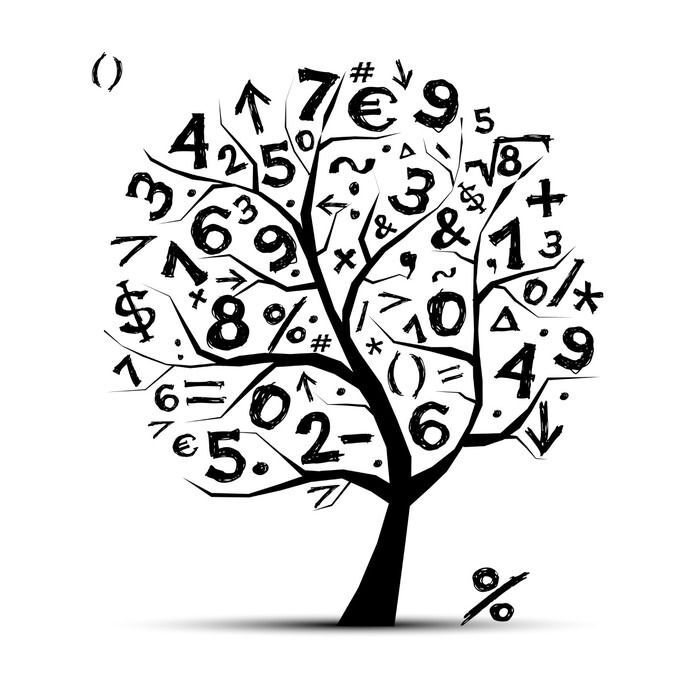1.5 Practice Problems
Exercise 5.1 Can two matrices be always added?
Exercise 5.2 If addition is possible, add the following matrices: \bold{A}=\begin{bmatrix} -1 & 2 & 3\\ 0 & 1 & 5 \end{bmatrix} \text{ and } \bold{B}=\begin{bmatrix} 1/2 & 1 & 3\\ 2 & -2 & 0 \end{bmatrix}.
Exercise 5.3 For matrices \bold{A},\bold{B}, is it always true that \bold{A}+\bold{B}=\bold{B}+\bold{A}? Explain your answer.
Exercise 5.4 If multiplication is possible, multiply the following matrices: \bold{A}=\begin{bmatrix} 1 & 2 & 3\\ 0 & -1 & 5 \end{bmatrix} \text{ and } \bold{B}=\begin{bmatrix} 1 & 2 & 1\\ 1 & 0 & 2 \end{bmatrix}.
Exercise 5.5 If multiplication is possible, multiply the following matrices: \bold{A}=\begin{bmatrix} 1 & 2\\ 0 & -1\\ -1 & 3 \end{bmatrix} \text{ and } \bold{B}=\begin{bmatrix} 1 & 5 & 1\\ 1 & 12 & 2 \end{bmatrix}.
Exercise 5.6 For matrices \bold{A} and \bold{B}, is it always true that \bold{AB}=\bold{BA}? Explain your answer.
Exercise 5.7 Give an example of a 4\times 2 diagonal matrix.
Exercise 5.8 Intuitively justify the following fact: (\bold{AB})^T=\bold{B}^T\bold{A}^T.
Exercise 5.9 Is the sum of two symmetric matrices always symmetric?
Exercise 5.10 Is the product of two symmetric matrices always symmetric?
Exercise 5.11 Give an example of a skew-symmetric matrix of order 4\times 4 with at least 4 non-zero elements.
Exercise 5.12 For any matrix \bold{A}, explain why
\bold{A}+\bold{A}^T is symmetric.
\bold{A}-\bold{A}^T is skew-symmetric.
Exercise 5.13 If \bold{A} has an inverse, then show that the inverse is unique.
Exercise 5.14 If \bold{A} is the inverse of \bold{B}, then show that \bold{B} is the inverse of \bold{A}.
Exercise 5.15
- Is \text{det} (\bold{A}+\bold{B})=\text{det} (\bold{A})+ \text{det} (\bold{B})?
- Is \text{det} (\bold{AB})=\text{det} (\bold{A}) \text{det} (\bold{B})?
Exercise 5.16 Suppose \bold{A} is a 2 \times 2 matrix and \bold{B} is the matrix we get by interchanging the two rows of \bold{A}. Show that \text{det} \bold{B} = - \text{det} \bold{A}.
Exercise 5.17 Find the determinant of \begin{bmatrix}-1 & 2 & 3\\ 0 & 1 & 5\\ 4 & 1 & -1\end{bmatrix}.
Exercise 5.18 Find a 3\times 3 matrix whose determinant is 6 and the absolute value of each entry is no bigger than 3.
Exercise 5.19 \begin{bmatrix} 2 & 1 & 3 \end{bmatrix}\begin{bmatrix} -1 & 0 & -1\\ -1 & 1 & 0\\ 0 & 1 & 1 \end{bmatrix}\begin{bmatrix} 1 \\ 0 \\ -1 \end{bmatrix}=?
Exercise 5.20 Find the inverse of the following matrix: \bold{A}=\begin{bmatrix} 1 & 2 & 3\\ 0 & -1 & 2\\ 1 & -2 & 0 \end{bmatrix}.
Exercise 5.21 Find the inverse of the following matrix: \begin{bmatrix} -1 & 0 & -1\\ -1 & 1 & 0\\ 0 & 1 & 1 \end{bmatrix}.
Exercise 5.22 If \bold{A}=\begin{bmatrix} 5 & 3\\ -1 & -2\\ \end{bmatrix}, then show that A satisfies the equation A^2-3A-7I=0.
Exercise 5.23 Consider a n \times n matrix \bold{A}. Then:
- If \bold{A} is invertible and \bold{AB}=0 for some n \times n matrix \bold{B}, then \bold{B}=0.
- If \bold{A} is not invertible, then we can find a n \times n matrix \bold{B} with \bold{AB}=0 but \bold{B} \ne 0.

